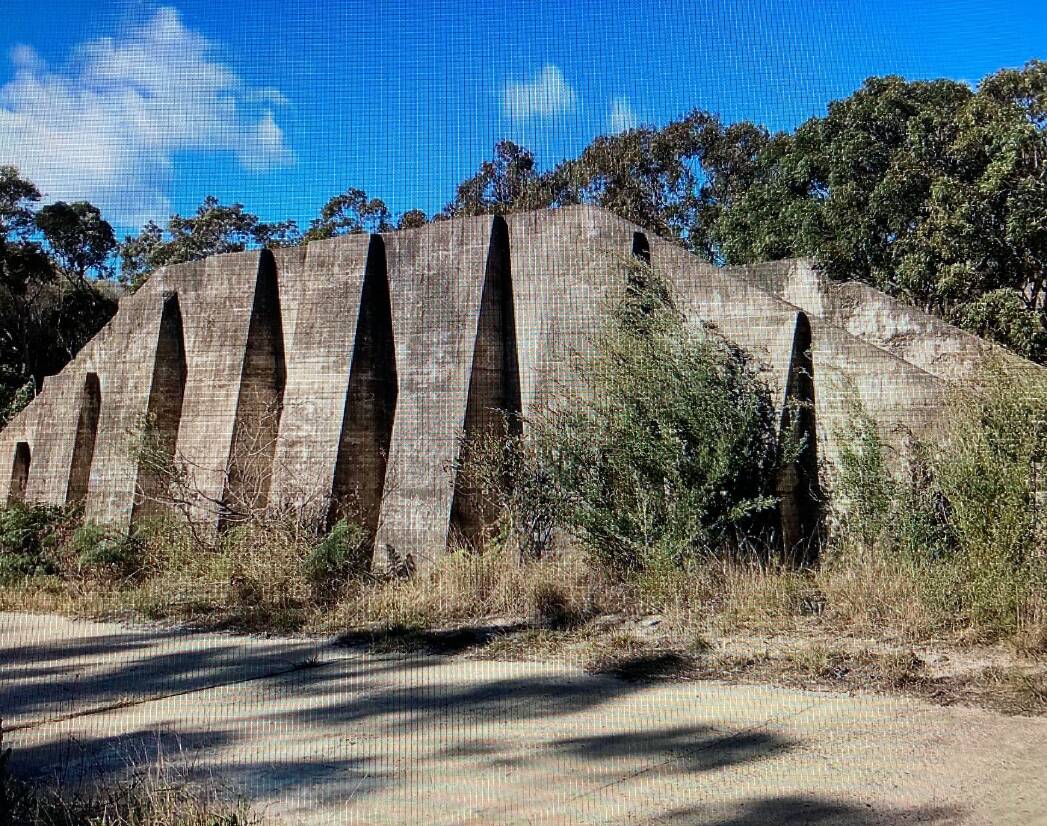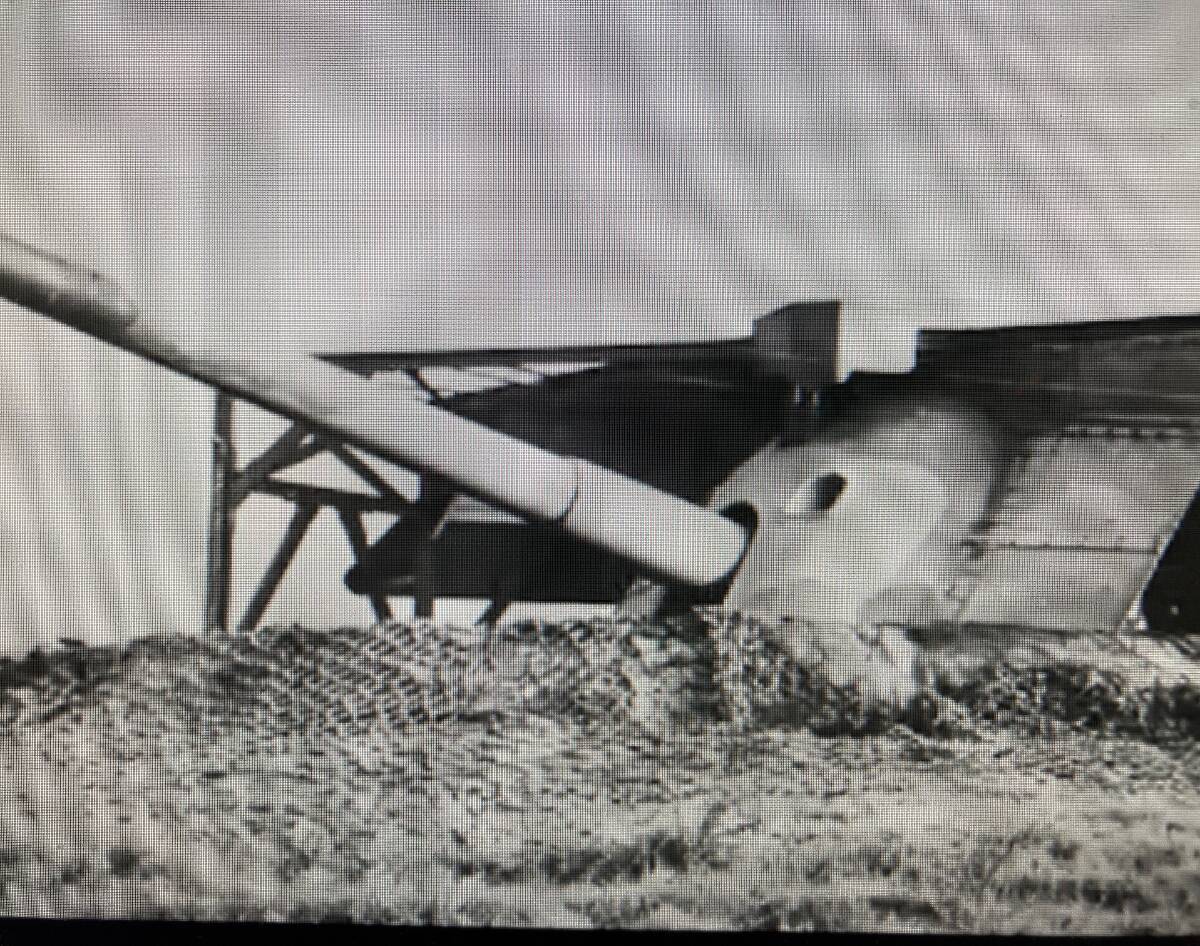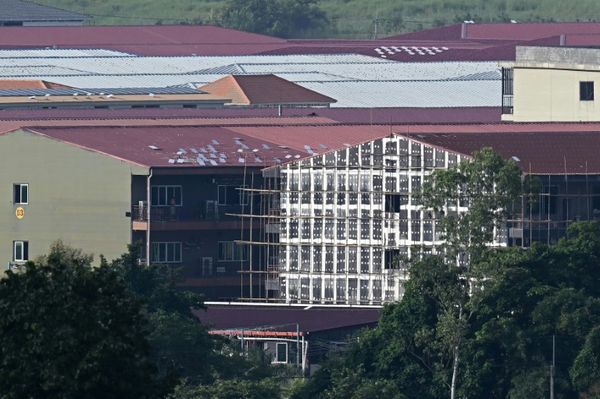
FEW "secret" wartime sites in Newcastle remain hidden for about three generations.
During World War II, Newcastle had many military sites, but very few remain relatively intact.
One extraordinary example was a 200-metre line of solid WWII concrete pyramids buried in sand for 80 years at the water's edge along Stockton Bight.
The tips of these lethal triangles only emerged after a wild storm that stripped away beach sand two years ago.
So today, let's look into the fascinating history of another wartime place, forgotten, but hiding in plain sight really.
If you came across a major feature of it - a very peculiar wall - about a kilometre into dense bush north of Stockton, you'd be forgiven for thinking you've stumbled upon ruins of a Babylonian citadel.
Of course, it's not.
The odd buttressed concrete wall only dates from WWII, but is one of the stranger features of the Fern Bay armour proof range (1941-1957). The remote site was rapidly built at the start of the war to test how effective artillery shells and other projectiles were against steel armour plate. The idea was then to develop a special Aussie steel to withstand enemy armour-piercing shells.
Experiments there involving shooting mortar and anti-tank shells into targets were noisy, but unknown to many Novocastrians of that era. Shells were usually caught in massive sand drifts and in concrete behind targets. But sometimes, shots with live munitions out to sea went awry, and many projectiles were later found and detonated along Stockton Beach.
One local who knows the subject well is Steve Ford, of Fullerton Cove, who recently added his expertise to the just opened Fortress Newcastle exhibition running until May 8 at Fort Scratchley. The project, three years in the making and involving 10 community groups, highlights the pivotal role Newcastle played in WWII.
Besides having a deep-water port and crucial ship repair facilities, our former BHP Steelworks made 9.9 million tons of iron and steel for the war effort. Related industries also produced everything for the military from explosive shells to machine guns, plus army clothing and food.

Protecting these industries were four radar stations, two RAAF bases (Williamtown and Rathmines) plus five inland army bases. The threat of war on our doorstep was very real. Newcastle Harbour, after all, was shelled by a Japanese submarine in June 1942.
If Newcastle was invaded, the fallback plan was to use explosives to flatten all Newcastle industry, not just BHP. To fight the enemy, military authorities needed a special range to test fire shells, and that was at Fern Bay.
Historian Steve Ford said the site was supposed to be very "hush hush", therefore almost no photographs existed of its wartime activity. Ford said the military's main target was test firing four-inch shells into 200mm armour plate steel that "punched right through". The now rusted gouged steel is still there to see.
"It was just unbelievable what they did up there. There was also a searchlight battery up at what is now 'The Cove' with power lines to switch on lights on poles (as a decoy) so that the enemy would think it was Newcastle," he said.
"The WWII test site was surprisingly a really big complex, with 12 buildings - now gone - all through the Fern Bay bush. I counted them on 1944 aerial photographs.
"They weren't camouflaged fakes either, the concrete footings are still there.
"There's still a big underground bunker and heaps of other stuff there. I became interested in the site because it's near where I live."
Ford said Fortress Newcastle's actual northern defence line once zig-zagged though the middle of Stockton's golf course surrounded by trenches, machine gun nests and tangled barbed wire.
"Our military even had a Japanese mountain gun they must have brought back from New Guinea fighting to test on the armour proof range. But whether we ever had a radar tower station at 'Wipers' to Stockton's north is a bit of a mystery."
One intriguing exhibit at the new Fortress Newcastle display is a mounted WWII Wirraway aircraft motor.
"It was left at Fighter World museum at Williamtown where staff have preserved it. My tip is that a trawler dredged it up with its net in the bight," Ford said.
"My information is that two planes from Williamtown RAAF went up on the training run, one day perhaps in the 1970s or 1980s, but one didn't come back, going into the sea. It was never recovered and two pilots died. We even have a picture of the crash. How spooky is that?
"A special stand has been constructed for the motor so it can be properly displayed. It's very tactile.
"I once spent three months at Fighter World, accumulating lots of photos and info towards this exhibition and now the RAAF also want the results for its 100th anniversary celebrations."

In preparation for the display, a 54-minute documentary called Fortress Newcastle was recently made by filmmakers Glenn Dormand and Tony Whittaker. In it is featured old-time local identity Geoff Hyde who, as a 10-year-old, would sometimes wander into the top-secret Fern Bay test site.
"There was no security. They (the soldiers) would show you the guns, pull a big truck out and then blow it to pieces. It was really scary, honestly," he said.
Long after WWII ended and sandmining had finished, there were plans for a housing commission development near the site. Therefore, 185 SES volunteers combed the beach for corroded shells.
Hyde said that 28 live explosive objects were discovered in the search and detonated where they were found. Decades earlier, he'd recovered six or seven 25-pounder shells, took them home and gave them a light tap with a hammer. They were soon thrown in the Hunter River for safety.
On the same film, Steve Ford tells of today's Nelson Bay road being quickly pushed through bush by American engineers early in WWII. Unfortunately, one Yank soldier was later killed in a road accident involving a stray cow. The Americans then warned farmers to keep livestock off the road. If not, all the local cattle were to be machine-gunned.







